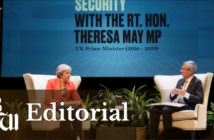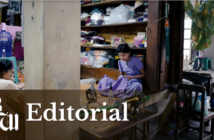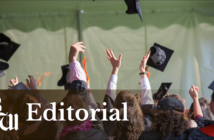It is no secret that university communities across the country are struggling to find harmony among the student body as campus diversity increases. Groups of students are resisting the change. They are perpetuating racial and cultural biases, socially alienating and insulting those that are different from them.
Parties like the one at Duke University in 2013, labeled “Asia Prime,” are examples of this. The Duke party was complete with an invitation that read, “We look forward to having Mi, Yu, You and Yo friends over for some Sake. Chank you.” Students referred to it as the “racist rager.”
Like Columbia University’s 2014 “Beer Olympics” party, during which attendees wore costumes that were supposed to represent different nationalities but instead “managed to be offensive to about half a dozen racial and ethnic groups,” according to Hannah K. Gold, who details some of the recent insulting parties in her article “Six of the Most Disturbing Racist and Sexist Themed College Frat Events from the Past Year: From Duke to Dartmouth, disgusting behavior.”
Or Dartmouth College’s “Bloods and Crips” party in 2013. As an offended student wrote to The Huffington Post, “Individuals mingled for hours while dressed as Bloods or Crips while using racialized language. It then turned into a ‘ghetto party’ with racialized language, speech and dress. Over 200 individuals attended this event.” Gold comments, “In the morning, everyone woke up, and lo and behold, became upstanding, politically correct citizens of their elite university again.”
Gold’s sarcasm notes the surprising dissonance between the image of educated students and their ignorant decisions. During all of these incidents, groups that represent millions of people were diminished to mere costumes and stereotypes. This reduction of individuality can lead to larger forms of discrimination and even possibly violence.
Lehigh’s campus struggles with similar issues. The Umoja House vandalism, Phi Kappa Theta’s chant, “Juan Direction,” and the many variations of “CEOs and Corporate Hoes” parties all demonstrate our own lack of social awareness.
Just a month ago, President Clayton alerted campus that, “over the weekend, a Lehigh student reported an act of vandalism that he described as a swastika scratched into the paint on the door of his car that was parked outside his off-campus residence.”
Earlier that month, Emory University’s AEPi fraternity house was vandalized after Yom Kippur with offensive graffiti that included swastikas.
To demonstrate a scary progression, the University of Arizona’s AEPi experienced similar acts of hate, yet the damage didn’t end there. On Nov. 14, four members of AEPi were assaulted by members of another fraternity, who shouted anti-Semitic slurs.
Violence can escalate so quickly once people are used to reducing others.
For instance, Rolling Stone recently released an article called “A Rape on Campus: A Brutal Assault and Struggle for Justice at UVA.” It’s a complete shock to the senses. In the article, female students recount their alarming battles with the prevailing rape culture on the University of Virginia’s campus. Rugby Road, a chant whose roots reach deep into UVA tradition and still flourishes today, weaves its way through the article and echoes the mentality of objectifying women.
One of the students interviewed says she heard one of her attackers say, “Grab its motherf—king leg,” before several fraternity brothers proceeded to gang rape her. Language reveals a lot about how people unconsciously view others. The fact that one of the rapists referred to her as an “it” shows her inhuman status in his eyes.
In a strange sense, language acts like a gateway drug. If you are OK with violating someone verbally, then making that step to violating someone in another sense, such as physically, isn’t as far of a jump. Incredibly offensive words that are becoming so normalized set a basis for what could ultimately become more aggressive kinds of discriminatory behavior. It desensitizes us to everything those words imply.
The actual words may seem harmless when said, but they help to perpetuate actual hate and actual violence.
If someone uses the N word on a regular basis, what moral brakes prevent her from painting her face? Or if someone uses derogatory language to demean female or LGBT sexuality, doesn’t that mentality make it easier for him to step beyond those words?
When offensive words are thrown around freely and jokes that generalize groups receive no objections, this process of desensitization is what makes it possible for students to hurt their classmates in ways they never would have imagined.
Racial, sexual and religious intolerance float by under the disguise of a joke deemed trivial or a word that seems all in good fun. But they signal an underlying problem that usually remains invisible until it erupts into something nobody can ignore. Let’s not wait until the next destructive incident. Let’s prevent it from ever happening.
Our words might seem tiny in the grand scheme of things, but they can create powerful change.





Comment policy
Comments posted to The Brown and White website are reviewed by a moderator before being approved. Incendiary speech or harassing language, including comments targeted at individuals, may be deemed unacceptable and not published. Spam and other soliciting will also be declined.
The Brown and White also reserves the right to not publish entirely anonymous comments.